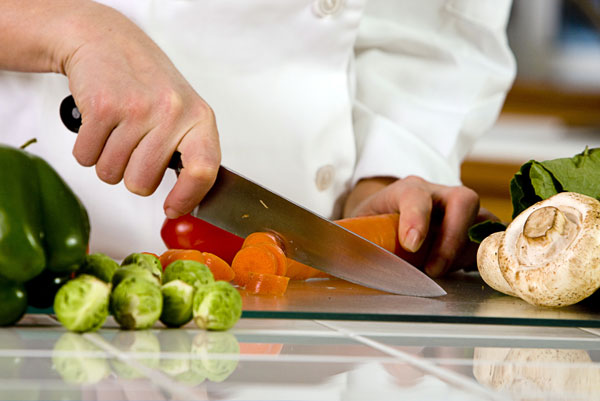Are plastic chopping boards more hygienic than wooden ones?
Another common Food Safety question we often hear is “are plastic chopping boards more hygienic than wooden chopping boards?”
Contrary to what you may think, there is not any conclusive evidence that either type of chopping board is more or less hygienic than any other. This also includes chopping boards made from glass, plastic or marble.

Make sure Chopping Boards are cleaned properly after each use
The key element to whether or not a chopping board is hygienic is whether the board is cleaned properly after each use. Thoroughly cleaning and sanitising boards between usages will help to greatly reduce the risk of cross contamination.
Replace damaged Chopping Boards
Another important element is to replace damaged chopping boards, for example boards with deep cuts or scoring on them. Any gabs or grooves in a chopping board have the potential to harbour bacteria and also risk cross contamination.

Use separate Chopping Boards to prepare raw and ready-to-eat foods
The last important factor to prevent unhygienic chopping boards is to use separate boards to prepare raw and ready-to-eat foods. This stops bacteria on raw meat, fish and vegetables from contaminating cooked food.
Contamination can be direct from sneezing, spitting or coughing over food, or direct from raw juices dripping onto other food.
Contamination can also be indirect from chopping boards, knives or hands that have touched raw food and are then reused before being properly cleaned.
You may wish to implement a colour coded system to your kitchen. Commonly green chopping boards are used for fruit and salads, blue chopping boards for raw fish, red for raw meat, white for dairy products and brown boards for raw vegetables.
If you work in a kitchen, ask a supervisor if they use this scheme in the kitchen. It is not a legal requirement, but it has been adopted by many organisations.

Food Safety Tips
In summary, to prevent chopping boards from being unhygienic you should abide the following tips;
-
Clean chopping boards after each use - this will help to reduce the risk of cross contamination
-
Replace damaged chopping boards - cuts and grooves can harbour bacteria
-
Use separate boards to prepare raw and ready-to-eat foods - this will also help to reduce the risk of contaminating any ready to eat foods with bacteria from raw, uncooked foods.

Further Learning
Additional information about our Food Safety Level 2 certificate can be found here. If you work with food, and don’t hold a valid food safety certificate, you can purchase a license and receive a certificate in a few hours.